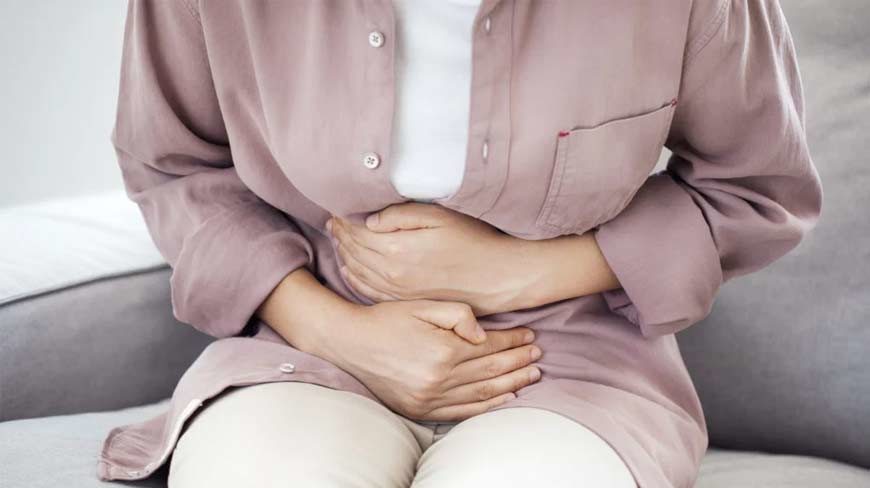6 Lower Intestinal Diseases and Their Treatment
Many people are no strangers to the occasional tummy troubles. Gastrointestinal diseases are those that affect the gastrointestinal (GI) tract and several specifically affect the lower intestinal tract, which includes the colon. There are two types of GI diseases: functional and structural.
Functional Gastrointestinal Diseases
Functional GI diseases occur when the GI tract looks normal but it doesn’t move properly. The most common GI ailments are functional GI diseases.
1. Constipation
Constipation is when it’s hard to pass bowel movements or they happen less frequently than usual. Lack of fiber, dehydration, or certain medications can cause stool to pass too slowly through the digestive tract. This leads to stool that is hard and dry. Chronic constipation occurs when constipation symptoms last for several weeks.
Treatment for constipation includes: slowly adding fiber to the diet, drinking more water, staying active, and using the bathroom when you get the urge.
2. Irritable bowel syndrome
Irritable bowel syndrome (IBS) is a chronic condition whose symptoms include abdominal pain, cramping, and excessive gas. Symptoms of IBS may come and go and may range in severity. Most people with IBS have mild symptoms.
Treatment for IBS includes: slowly adding fiber to the diet, drinking more water, staying active, and getting enough sleep.
Structural Gastrointestinal Diseases
Structural GI diseases occur when the bowel looks abnormal and it doesn’t work properly.
3. Colon Polyps
Colon polyps are common: as many as half of all adults will develop them! A colon polyp is a small lump that forms in the lining of the colon. Most colon polyps don’t have symptoms, but some people with colon polyps may experience pain, rectal bleeding, changes in stool color, and change in bowels.
Though most colon polyps are harmless, some can develop into colon cancer. Colon cancer is the third most common form of cancer in the United States. Fortunately, colon cancer is highly preventable through regular colon cancer screenings, also known as colonoscopies.
Treatment for colon polyps includes laparoscopic surgery, removal of colon or rectum, and colonoscopies. During a colonoscopy, a gastroenterologist uses a long, flexible tube with a camera and a light called a colonoscope to examine the walls of the large intestine. If polyps are found, the gastroenterologist can remove them during the colonoscopy. This makes a colonoscopy the only cancer screening that both prevents and detects cancer. Colonoscopies are recommended for those over 45.
4. Hemorrhoids
Hemorrhoids occur when veins in the lower rectum and anus become swollen. There are two types of hemorrhoids: internal (inside the rectum) or external (in the skin surrounding the anus). Hemorrhoids are usually caused by straining during bowel movements, pregnancy, or being overweight. Symptoms of hemorrhoids include irritation, pain, discomfort, itching, and inflammation.
Treatment for hemorrhoids includes: eating more fiber, hemorrhoid creams, a warm sitz bath, laxatives, and oral pain relievers. If home remedies don’t work, other treatments may be needed, like laser, infrared, or bipolar coagulation, sclerotherapy, or hemorrhoid banding. Hemorrhoid banding is a quick, painless, non-surgical solution for hemorrhoids.
5. Diverticular Disease
Diverticular disease is a group of conditions that include diverticulosis, diverticulitis, and diverticular bleeding.
- Diverticulosis is the formation of diverticula (small pockets that form in the wall of the bowel). Diverticula can form because of increased pressure on weak spots in the bowel wall. Diverticulosis typically has no symptoms.
- Diverticulitis occurs when one or more diverticulum becomes infected or inflamed. This is most often caused by waste that blocks the diverticula, allowing for bacteria to multiply and turn into an infection. Diverticulosis symptoms include cramping, especially in the lower left abdomen; tenderness in the lower left abdomen, nausea, and vomiting; fever and chills; constipation; and diarrhea.
- Diverticular bleeding occurs when a small artery in a diverticulum breaks, causing bleeding from the rectum. This can result in maroon or bright red blood during bowel movements. Diverticular bleeding is usually painless.
Treatment of diverticular disease depends on the severity of symptoms. Treatment for mild symptoms includes antibiotics and a clear liquid diet. Treatment for severe symptoms may include hospital care, intravenous antibiotics, and fluids, or abscess draining. In some cases, surgery may be needed.
6. Ulcerative Colitis
One of many types of colitis, ulcerative colitis is a long-lasting inflammatory bowel disease (IBD) that causes inflammation and ulcers in the large intestine. The cause of ulcerative colitis is unknown, but research indicates that it is influenced by genetics, the environment, and an overactive immune system. Symptoms of ulcerative colitis include diarrhea, abdominal pain or cramping, rectal pain and bleeding, constipation, fever, dehydration, and weight loss.
Treatment for ulcerative colitis: medications or surgery. Ulcerative colitis is a chronic illness, so it requires ongoing treatment.
If you’re suffering from any of these common GI disorders, a gastroenterologist can help. Make an appointment today.
Related:


